Intel Overclocking Platform
Our midrange Intel platform focuses on overclocking as a primary consideration, but we aren't looking at achieving maximum clock speeds or performance. Instead, we wanted to focus on a platform that would allow us to get the largest overclock relative to the basic clock speed. Gaming is a second consideration, and while the final result might be slower in some games compared to the AMD configuration listed on the previous page, it's certainly no slouch.
| Intel Overclocking/Gaming System |
| Hardware |
Component |
Price |
Rebates |
| Processor |
Intel Core 2 Duo E4300 (1.80GHz 2MB Shared) - Retail |
$135 |
|
| Heatsink |
Thermalright Ultra 120 + Fan |
$70 |
|
| Motherboard |
GIGABYTE GA-965P-DS3 (LGA 775 P965) |
$116 |
|
| Memory |
Transcend JETRAM 2x1GB DDR2-800 (5-5-5-12 JM2GDDR2-8K) |
$113 |
|
| Video Card |
PNY GeForce 8800GTS 320MB (VCG88GTS32XPB) |
$276 |
$20 |
| Hard Drive |
Seagate Barracuda 7200.10 ST3320620AS 320GB 16MB |
$80 |
|
| Optical Drive |
Pioneer Black DVR-112D 18X DVD+R |
$38 |
|
| Case |
COOLER MASTER Centurion 534 (RC-534-KKN2-GP) |
$66 |
|
| Power Supply |
CORSAIR 520W (CMPSU-520HX) |
$125 |
$10 |
| Display |
Sceptre X20WC-Gamer 20.1" 5ms (1680x1050) |
$235 |
$30 |
| Speakers |
Logitech X-530 5.1 70W Speakers |
$74 |
|
| Keyboard and Mouse |
Microsoft Comfort Curve 2000 B2L-00047 |
$28 |
|
| Operating System |
Windows MCE 2005 or Vista Home Premium (OEM) |
$115 |
|
| Bottom Line |
|
$1471 |
$1411 |
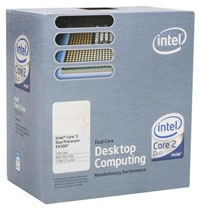 |
The least expensive Core 2 Duo processor ends up being the most sensible choice for getting the largest percentage overclocks, so compared to the entry level Intel configuration you don't even have to spend more money on this area. The E4300 has a base clock speed of 1.8GHz but uses a 200 MHz front side bus, whereas the more expensive E6300 has a 266 MHz front side bus. What that means is we don't need a motherboard or memory capable of running at insane bus speeds in order to get perhaps as much as a 100% overclock. The E6320 and E6420 will increase the amount of L2 cache while keeping the same clock speeds and bus speeds as the E6300 and E6400 respectively, but the new chips aren't available yet. Prices should also be dropping a bit more in the near future on Intel processors, so if you wait a few weeks you might be able to save another $20 or so. If you can spare the extra change, moving straight up to the E6600 can get you the best of both worlds - more cache and the ability to still reach 3.6GHz and beyond - but while that's a good choice for stock or overclocked systems, the E4300 remains the best bang for the buck in terms of pure overclocking ability.
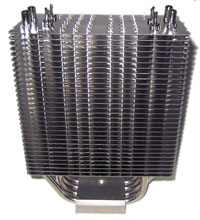 |
To aid in overclocking, we added an aftermarket heatsink. The Thermalright Ultra 120 currently sits on top of our heatsink performance charts, so it was the logical choice. In truth, the Thermalright Ultra 120 Extreme is the best air cooler we've tested so far, but we still couldn't find it in stock anywhere. It should be arriving any day now, and it shouldn't cost more than a few dollars more than the stock Ultra 120, so if you can find it in stock we would recommend that instead. Either way, CPU temperatures shouldn't be the limiting factor when it comes to overclocking with these heatsinks.
 |
Given our selection of processor, we can pretty much choose any of the midrange performance motherboards on the market and come close to our target 3.6GHz. While nForce 650i Ultra motherboards have started to show up at retail, it's a bit early to say whether or not they are truly better than the P965 platform, especially when it comes to overclocking and maturity. Since the chipset first launched six months ago, Gigabyte's GA-965P-DS3 has been a popular motherboard in this market. The latest revision improved overclocking in terms of maximum bus speeds, but here you can choose to save $15 and stick with the earlier revision, unless you plan on selecting some other parts that might allow you to reach a 500 MHz FSB. This Gigabyte board earned our Silver Editors' Choice award, and for the price it remains one of the best P965 offerings.
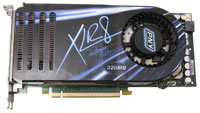 |
After spending a bit more money on aftermarket cooling, we opted to cut costs in the graphics department. We mentioned the option of purchasing a GeForce 8800 GTS 320MB already, and you end up saving over $100. We'll take that route this time, selecting the PNY offering that is a standard reference card design (500/1600 clocks). If maximum gaming performance isn't a primary concern, selecting one of the newly released and less expensive GeForce 8600 GT/GTS cards is another possibility. Again, waiting to see what AMD has up their sleeve with the R600 graphics card series wouldn't be a bad idea either.
 |
Considering that overclocking tends to stress systems quite a bit more than running at stock speeds, we felt the move from relatively generic power supplies to a quality aftermarket solution was warranted. We tossed around several brands, including SeaSonic and Silverstone, but in the end we selected the Corsair 520W. This power supply is anything but cheap, but we've had enough lesser power supplies fail during overclocking that we decided to be prudent and spend the money upfront rather than waste time and money swapping power supplies in the future.
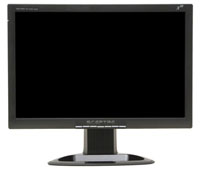 |
As an alternative to the 22" LCD we listed on the AMD gaming configuration, the Sceptre X20WC-Gamer is a 20.1" widescreen LCD that has the same native resolution as the Acer 22". With the rebate, you can save about $70 and some might argue that the Sceptre actually looks better. We wouldn't necessarily go that far, as both LCDs are pretty clearly looking to keep costs down. Which LCD do we prefer? One of the 24" LCDs, as they invariably look better and offer more features! Really, though, it's up to the individual to decide which is more important: size, price, and/or quality.
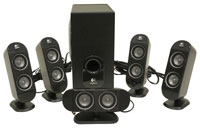 |
You may have noticed that we didn't list any sound cards on our midrange solutions. Creative's Sound Blaster X-Fi has basically been the undisputed king of gaming sound cards since it became available, but the changes made in Windows Vista in regards to sound make us hesitant to spend any extra money on a sound card right now. We've encountered at least a few systems that simply don't work properly with X-Fi cards under Windows Vista, so if you have any intention of upgrading to the new operating system you might want to hold off and only purchase a sound card once you're sure you need/want it.

















46 Comments
View All Comments
JarredWalton - Saturday, April 21, 2007 - link
I'd take the features of the 690G over the older nForce 61x0 boards... but then I like that HDMI connection. If you're willing to spend a bit more money, getting the Biostar is the way I'd go. Or spend even more money and just get an entry level GPU, but that would add at least $100 if you want something that can run most games at moderate detail settings. NVIDIA is supposed to be working on an updated IGP, so I'm interested to see what they come out with. If they actually put 8 pixel pipes in an IGP, I'd be ecstatic.As for abit, your abit fetish is well known. ;) I wouldn't get the entry level ASUS for overclocking, but I've got their 939 equivalent (6100 chipset) and it's been running fine for a year or so... even with a 20% overclock on a 3800+. Sometimes I need to boot twice because the first POST will fail, but if it boots it's rock solid. Anyway, ASRock is quirky in my opinion, but if you're willing to go with basic parts and not overclock they're usually fine as well. Just stay away from the VIA chipsets.
yyrkoon - Sunday, April 22, 2007 - link
Forgot to mention: has proven to work for me for over 10 years.JarredWalton - Sunday, April 22, 2007 - link
I really liked abit back in the socket 370 era (and the slot 1 timeframe as well). Their Pentium 4 boards didn't do as much for me, and only recently have they started to recover in my opinion. I haven't tried the latest boards, but Gary's experiences with the initial release BIOS on several has been less than stellar. Like most companies, they have hit and miss products these days.My old Abit IT5H with a Pentium MMX 200 at 250 MHz was a great system back in the day. I had that system running for at least 5 years - first for me and then for my brother. BE6 and BE6-II were also decent boards, but I had both models fail from leaky capacitors. Abit was good enough to replace the boards (even though one was three years old), but I think the caps issue seriously hurt them for a while. They must have lost a ton of money replacing boards.
yyrkoon - Monday, April 23, 2007 - link
Oh, by the way, we recently sold a system, used, to a customer, that had a BE6 board in it, still works great. We also have ~10 other ABIT boards, all lying about, out of service, but still functional. Then again, we also have some Tyan, and Intel boards(dual slot workstation/server boards), that are fairly old lying about also . . .yyrkoon - Monday, April 23, 2007 - link
RIGHT_NOW, we have 5 systems, all using ABIT boards, all working great. These include an AS8, an AW8-MAX. 2x NF-M2 nViews,and an NF7-S2G. Two of these I own personally.The NF7-S2G had to be replaced, it died a premature death, from what I can tell, it was becasue I was using a very old compaq keyboard ( I still love this keyboard ), that kept comming out of the PS2 port, and eventually, the board died because of it. The AS8 is owned by my business partner, he bought it becasue the ASUS board he bought was dead out of the box (that made 4 in a row for us, over the course of a year, so we stopped using them period). Anyhow, the AS8 exibited dailey lockups, and crashed, we couldnt figure out what was happening for some time. Turned out, it was not the board that was at fault, but the ATI 9600 Pro card, drawing too much power off of the AGP port (found the fix on ABITs forums, the system has been flawless since). The other systems run next to perfect, if not perfect, all are very stable.
I have owned boards made from just about any manufactuer you can think of, and have had some by companies that are no longer in business, and the reason why I keep going back to ABIT, is because I get tired of the hassles other board OEMs make you go through. However, it is not like ABIT boards are perfect, but I have yet to run into an ABIT board, that was really not at fault, or if it was at fault, the issue was easily correctable. Jarred probably knows about my most recent exploit outside of the ABIT realm, which invloved an ASROCK board, which to say, this ABIT NF-M2 nView replaced . . . and I am very happy I did replace it.
I have also owned one of the 'leaky capacitor' ABIT boards, and since my business partner here has been an EE for nearly 30 years, he replaced the caps for me, no problem, although, the board has become otherwise unstable, and I am not sure why(does not really mattter, it was a socket A board, that I hacked the BIOS on to run the next generation of socket A 2000+ XP processor on anyhow, but the board ran fine for 5 years). That being said, this was not JUST ABIT this happened to alone, it happened to many OEMs that used japanese caps around this time, and I bet the company responcable, is no longer in business.
I have good will towards many motherboard OEMs, MSI, Gigabyte, Tyan just to name a few, and if ABIT were to go out of business right now, I am not sure which brand I would be using next, but it would probably be one of those, but I have YET to run into the random problems people claim they have with the random ABIT board, and I usually chalk it up to inexperienced users, trying to build a system. Although, I suppose there could be faulty boards, in a good line . . . My biggest latest problem with ABIT: my NF-M2 nView WILL_NOT boot with a USB HDD powered on , and attached. Well sometimes it will, but it will never make it into windows, until I power down the USB device. Not sure what the problem is, and I suppose it could be fixable to changing a BIOS setting (maybe setting USB devices compatable with thge USB 1.1 standard i nthe BIOS?), but this issue is really, really a minuscule issue in my opinion.
Maybe my luck with ABIT has just been good ? If that is the case, something is going on, becasue like I have said before, I have been using almost exclusively ABIT boards (yes, there are a few exceptions) for the last 10-11 years. If I am a 'fanboy', that would be the reason why.
Zirconium - Sunday, April 22, 2007 - link
I still remember the BP6 days when Abit was the only one with 1 MHz clock speed adjustments. I still remember how (nerd) pimp I thought I was, running dual 300 MHz celerons OC'd to 450 MHz.yyrkoon - Sunday, April 22, 2007 - link
Yeah, I not unlike other people stick with things that have proven to work for me. It is pretty much that simple.
Sunrise089 - Friday, April 20, 2007 - link
Thanks for updating the guide Jarred. I think you got the price points just right this time, even if you named them wrong. It really isn't an AMD Gaming vs an Intel Overclocking, it's just the smartest decisions for each at a $1500 price point. Too often in the past the guide hasn't stuck to a set price, instead just calling it "midrange", and therefore AMD's $1300 midrange configuration would get outclassed by Intel's $1600 configuration. Keeping the prices closer helps us see that while we'd all rather have Core 2 Duo in our machines, it does necessatate trade-offs to keep the price competitive.Now if you can, how 'bout making these come out a bit more often?
tacoburrito - Friday, April 20, 2007 - link
Considering that the Penryn and Barcelona are coming out later this year, which will mean lower prices for the current generation of procs, is now really a good time to buy and build based on current procs?KeypoX - Saturday, April 21, 2007 - link
i agree it isnt a good time ... we are in the middle of another transition and we should wait till it levels out. I think the marketing job intel is doing with these price cuts is awesome though. They are about to make a boat load of money.